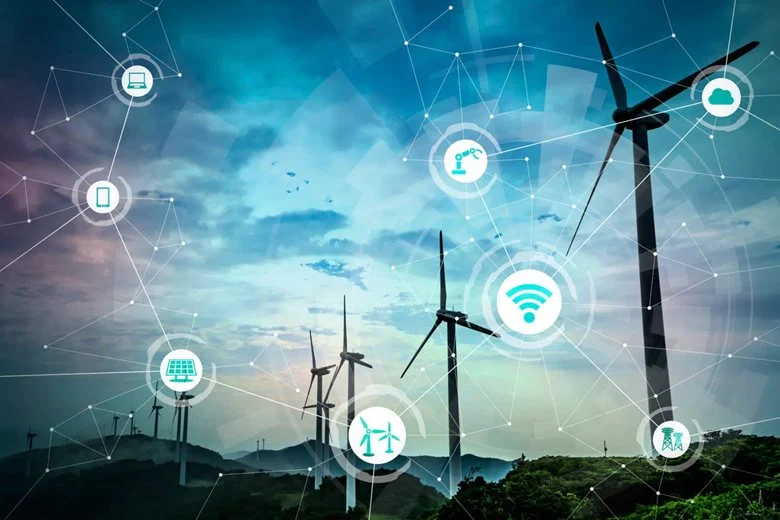Energy storage systems (ESS) are a crucial component of the modern energy landscape, particularly in the United States, where there is a significant push toward renewable energy sources. These systems store energy for later use, helping to balance supply and demand, improve grid stability, and ensure a reliable energy supply. This article explores the importance of energy storage systems in USA, their various types, benefits, challenges, and future prospects.
The Importance of Energy Storage Systems in the USA
The transition to renewable energy sources such as solar and wind is essential for reducing greenhouse gas emissions and combating climate change. However, these sources are intermittent – solar power is only available when the sun is shining, and wind power depends on wind conditions. Energy storage systems solve this problem by storing excess energy generated during peak production times and releasing it when production is low or demand is high. This capability makes ESS a vital part of the renewable energy ecosystem.
Types of Energy Storage Systems
-
Battery Energy Storage Systems (BESS)
- Lithium-Ion Batteries: The most common type of battery used in energy storage due to their high energy density, efficiency, and declining costs. They are used in various applications, from residential solar energy systems to large-scale grid storage.
- Flow Batteries: These use liquid electrolytes and are known for their scalability and long cycle life, making them suitable for large-scale energy storage applications.
-
Pumped Hydro Storage
- This method involves pumping water from a lower elevation reservoir to a higher elevation during periods of low electricity demand. When electricity demand is high, the water is released back to the lower reservoir through turbines to generate electricity. Pumped hydro is the oldest and most widely used form of energy storage.
-
Compressed Air Energy Storage (CAES)
- CAES systems store energy by compressing air and storing it in underground caverns. When electricity is needed, the compressed air is released, heated, and expanded in a turbine to generate electricity.
-
Thermal Energy Storage
- This type stores energy in the form of heat. Common methods include using molten salts or other heat storage materials, which can retain heat for extended periods and release it when needed to produce electricity.
-
Flywheel Energy Storage
- Flywheels store energy in the form of rotational kinetic energy. When energy is needed, the flywheel slows down, converting its kinetic energy back into electricity. This technology is known for its high efficiency and rapid response time.
Benefits of Energy Storage Systems
-
Grid Stability and Reliability
- ESS help maintain grid stability by providing frequency regulation and voltage support. They can respond quickly to changes in electricity demand and supply, preventing blackouts and ensuring a consistent power supply.
-
Renewable Energy Integration
- By storing excess energy generated from renewable sources, ESS facilitate higher integration of renewables into the grid, reducing reliance on fossil fuels and lowering greenhouse gas emissions.
-
Cost Savings
- Energy storage can reduce electricity costs by storing energy during periods of low demand (and low prices) and releasing it during periods of high demand (and high prices). This helps flatten peak demand and avoid costly infrastructure upgrades.
-
Energy Independence
- For remote areas and islands, ESS provide a reliable power supply independent of external sources. This is particularly valuable for critical infrastructure such as hospitals and military bases.
-
Emergency Backup
- ESS can provide backup power during emergencies, ensuring that essential services remain operational during power outages.
Challenges of Energy Storage Systems
-
High Initial Costs
- The upfront costs of installing energy storage systems can be significant, particularly for large-scale projects. While prices are falling, the initial investment remains a barrier for many.
-
Regulatory and Policy Hurdles
- The regulatory environment for energy storage is still evolving. Inconsistent policies and lack of clear guidelines can slow down the deployment of ESS.
-
Technological Limitations
- Current energy storage technologies have limitations in terms of energy density, efficiency, and lifespan. Ongoing research and development are needed to address these challenges.
-
Market Dynamics
- The energy market in the USA is complex, with various stakeholders having different interests. Aligning the incentives of utilities, consumers, and policymakers is crucial for the widespread adoption of ESS.
-
Environmental and Safety Concerns
- Some energy storage technologies, particularly certain types of batteries, have environmental and safety concerns related to their production, use, and disposal.
Future Prospects of Energy Storage Systems in the USA
The future of energy storage systems in the USA looks promising, driven by technological advancements, supportive policies, and increasing demand for renewable energy. Key trends and developments include:
-
Advancements in Battery Technology
- Research into new materials and chemistries, such as solid-state batteries, promises to improve energy density, safety, and cost-effectiveness.
-
Grid Modernization Initiatives
- Investments in grid modernization and smart grid technologies are facilitating the integration of energy storage systems, enhancing grid flexibility and resilience.
-
Supportive Policies and Incentives
- Federal and state governments are introducing policies and incentives to promote the adoption of ESS, including tax credits, grants, and subsidies for both residential and commercial installations.
-
Growing Market for Electric Vehicles (EVs)
- The rise of electric vehicles is boosting demand for advanced battery technologies. EV batteries can also serve as distributed energy storage resources, providing additional grid support.
-
Increased Deployment of Renewable Energy
- As the USA continues to expand its renewable energy capacity, the need for energy storage systems will grow. ESS will play a critical role in balancing supply and demand and ensuring a reliable power supply.
-
Energy Storage as a Service (ESaaS)
- This emerging business model allows customers to pay for energy storage services without owning the storage systems, offering flexibility and accelerating the adoption of ESS by reducing upfront costs.
Conclusion
Energy storage systems are essential for a sustainable and resilient energy future in the USA. They enable the integration of renewable energy, enhance grid stability, reduce costs, and provide energy independence and emergency backup. While challenges remain, the future is bright, with technological advancements, supportive policies, and market growth driving the evolution of energy storage. As the country strives to achieve its clean energy goals, energy storage systems will undoubtedly be at the forefront of this transformative journey.













